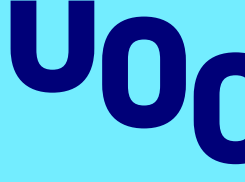Audio watermarking
Audio watermarking is a technology for concealing information in audio signals in a way that is imperceptible to the human ear while allowing the data to be extracted by devices such as mobile phones or tablets. The KISON research group has created a system that embeds data in audio signals, for hiding and recovering information such as promotion codes. Watermarking is a technology with uses that range from commercial applications to security. The UOC - through its Knowledge Transfer and Research Support Office (OSRT) - applied to the United States for a patent for this system, and it was granted in February 2018.
An audio watermark is a sequence of bits embedded in a streamed audio signal (TV, radio or internet). It contains unique identifiers of both the portion of the audio from which the mark was extracted and the distribution source to which the content can be credited.
The audio watermarking technique enables transmission of extra information that is relevant to the content in a way that is imperceptible to the user of the digital object and offers a wide variety of applications, for instance monitoring broadcasts, identifying ownership, proof of ownership, monitoring transactions, content authentication (with or without manipulation recognition), and copy control and device control.
Advantages
The UOC's system has two innovative aspects: first, the use of the Fourier domain, and second, the use of the time and frequency domains during the embedding. This provides the following competitive advantages:
- Recovery of watermarks at distances over 6 metres from the transmitter.
- High fidelity and robustness even in very difficult conditions.
- Better time synchronization between emitter and receiver.
- High capacity (over 1000 bits per second).
The inventor of this technology is David Megías, principal investigator for the UOC's KISON (K-riptography and Information Security for Open Networks) research group, part of the IN3 research institute of which he is the director.

